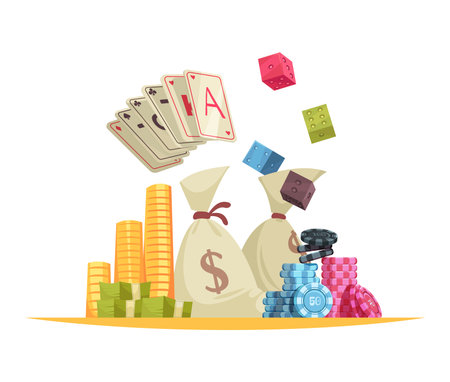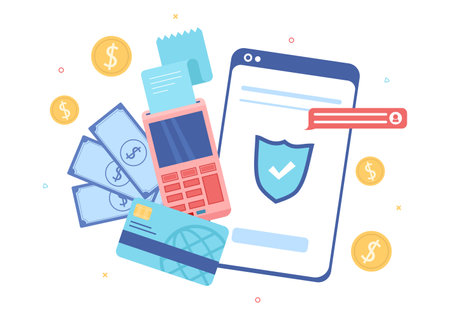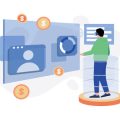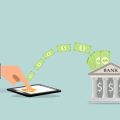1. Understanding the Roots of Credit Card Debt in America
Credit card debt is a challenge that many American households face, and understanding its roots is the first step toward breaking free from it. Let’s explore some of the main reasons why so many families find themselves in this situation.
Cultural Habits and Spending Patterns
In the U.S., credit cards are more than just a payment tool—they’re often seen as a symbol of financial freedom and convenience. However, this mindset can sometimes lead to overspending. Many people use credit cards for everyday purchases, treating them almost like cash, without always tracking their spending closely. This “buy now, pay later” culture is deeply ingrained in American society and can easily snowball into unmanageable debt if not kept in check.
Unexpected Expenses
Life is full of surprises, and not all of them are pleasant. Medical emergencies, car repairs, or sudden job losses can catch anyone off guard. Without enough savings set aside, many Americans turn to credit cards to cover these unexpected bills. While this provides immediate relief, it also adds to their overall debt load. Here’s a look at some common unexpected expenses that often lead to credit card use:
| Type of Expense | Examples |
|---|---|
| Medical Bills | Emergency room visits, surgeries, dental procedures |
| Car Repairs | Engine failure, transmission issues, new tires |
| Home Maintenance | Plumbing leaks, roof repairs, broken appliances |
| Job Loss or Reduced Income | Unemployment periods, reduced work hours |
Systemic Factors Affecting Debt Accumulation
Beyond personal habits and emergencies, there are larger systemic issues at play. High interest rates on credit cards can make even small balances grow quickly over time. Additionally, wages in many sectors have not kept pace with the cost of living, making it harder for families to cover basic expenses without relying on credit. Some households may also lack access to financial education or affordable banking services, which can limit their options for managing money wisely.
The Impact of Minimum Payments
A common pitfall for many is making only the minimum payment each month. This approach stretches out repayment over years and racks up significant interest charges. The table below shows how long it might take to pay off a $5,000 balance at different monthly payment levels (assuming an 18% annual interest rate):
| Monthly Payment Amount | Time to Pay Off Balance | Total Interest Paid |
|---|---|---|
| $100 (Minimum) | ~8 years | $4,300+ |
| $200 | ~2.7 years | $1,300+ |
| $300 | ~1.7 years | $850+ |
2. Assessing Your Current Financial Situation
Why You Need a Clear Financial Picture
If you want to break free from credit card debt, the first step is knowing exactly where you stand. Many American households struggle with debt because they don’t have a clear understanding of how much they owe, what interest rates they’re paying, or where their money goes each month. By taking stock of your finances, you’ll be better equipped to make smart decisions and build a plan that works for your unique situation.
List Out All Your Debts
Start by making a list of every credit card you have, including balances and interest rates. You can use a simple table like the one below to help organize this information:
| Credit Card | Balance Owed | Interest Rate (%) | Minimum Payment |
|---|---|---|---|
| Visa – Bank A | $2,500 | 18.99% | $75 |
| Mastercard – Bank B | $1,200 | 22.49% | $40 |
| Store Card – Retailer C | $800 | 25.99% | $35 |
This table will give you a quick snapshot of your total debt and show which cards are costing you the most in interest each month.
Track Your Spending Habits
The next step is figuring out where your money goes. Look at your last two or three months of bank and credit card statements. Break down your spending into categories like groceries, dining out, utilities, transportation, entertainment, and other essentials. You might be surprised by how much those small purchases add up over time!
Sample Monthly Spending Breakdown
| Category | Amount Spent ($) |
|---|---|
| Groceries | $500 |
| Dining Out & Coffee Shops | $250 |
| Utilities & Bills | $300 |
| Transportation (Gas/Transit) | $180 |
| Entertainment & Streaming Services | $120 |
| Miscellaneous/Other Essentials | $100 |
| Total Monthly Spending: | $1,450 |
This kind of breakdown can reveal areas where you might be able to cut back and redirect funds toward paying off debt.
Create a Simple Budget That Works for You
Once you know what you owe and how you spend, it’s time to set up a budget that fits your lifestyle and goals. The classic “50/30/20” rule is popular in the U.S.: 50% of your income goes to needs, 30% to wants, and 20% to savings or debt repayment. Adjust these percentages based on your own priorities—what matters most is being honest about your spending so you can stay on track.

3. Developing a Personalized Debt Payoff Strategy
Getting out of credit card debt is not one-size-fits-all. Every American household has unique needs, spending habits, and goals. That’s why it’s important to create a debt payoff plan that works specifically for your family. Let’s explore two of the most popular debt repayment strategies used in the U.S.—the Snowball and Avalanche methods—and help you figure out which might be the best fit for you.
The Debt Snowball Method
This approach is all about building momentum. Here’s how it works: you list all your credit card debts from smallest to largest balance. You make minimum payments on every account except for the one with the smallest balance. For that one, you put as much extra money as possible toward it each month. Once that card is paid off, you roll over its payment amount to the next smallest debt, and so on. Many Americans find this method motivating because you see quick wins early on.
Pros and Cons of the Snowball Method
| Pros | Cons |
|---|---|
| Quick psychological wins | May pay more in interest over time |
| Simple and easy to follow | Larger debts may linger longer |
The Debt Avalanche Method
This strategy focuses on saving money on interest. List your credit cards by interest rate, from highest to lowest. Make minimum payments on everything except for the card with the highest interest rate—put any extra cash there first. When that’s paid off, move to the next highest rate. Over time, this approach usually helps you pay less in total interest, though progress may feel slower at first.
Pros and Cons of the Avalanche Method
| Pros | Cons |
|---|---|
| Saves money on interest | Progress may feel slow initially |
| Pays off overall debt faster in most cases | Less immediate satisfaction compared to snowball method |
Which Approach Is Right for Your Family?
No two families are exactly alike, so choosing your strategy depends on what motivates you and fits your situation best:
- If seeing small balances disappear quickly keeps you motivated, try the Snowball Method.
- If minimizing total interest paid is more important to you, consider the Avalanche Method.
- You can even combine both methods or adjust them based on changes in your budget or life events.
Debt Repayment Methods Comparison Table
| Snowball Method | Avalanche Method | |
|---|---|---|
| Main Focus | Smallest balance first | Highest interest rate first |
| Motivation Type | Quick wins/psychological boost | Savings-driven/interest reduction |
| Total Interest Paid* | Tends to be higher overall | Tends to be lower overall |
| User Experience | Easier to stay encouraged early on | Might take longer to see results but saves more money long-term |
| *Actual results depend on your specific debts and payments. | ||
Pro Tip:
If you’re struggling to decide, use online calculators or apps designed for American consumers that let you compare both strategies side by side using your real numbers.
4. Building New Financial Habits for Long-Term Success
Start with a Realistic Budget
Creating a budget is the foundation for breaking free from credit card debt and achieving financial stability. Many American households find success using simple, straightforward budgeting methods. Here’s how you can get started:
| Step | Description |
|---|---|
| Track Your Spending | Write down every expense for a month—groceries, bills, coffee runs, streaming subscriptions, and more. |
| Sort Expenses | Group your expenses into categories such as Housing, Transportation, Food, Entertainment, and Miscellaneous. |
| Set Spending Limits | Determine realistic limits for each category based on your income and priorities. |
| Adjust Regularly | Review your budget every month and make changes if needed to keep on track. |
Boost Your Credit Score with Smart Moves
A higher credit score means better interest rates and more financial opportunities. Here are practical ways American households can give their credit scores a healthy boost:
- Pay On Time: Set up automatic payments or reminders to never miss a due date.
- Lower Your Credit Utilization: Try to use less than 30% of your available credit limit.
- Avoid Opening Too Many Accounts: Each new application causes a small dip in your score.
- Check Your Credit Report Annually: Federal law gives you one free report per year from each bureau at AnnualCreditReport.com. Dispute any errors right away.
Adopt Smart Spending Practices That Fit Your Lifestyle
Changing spending habits doesn’t mean giving up everything you enjoy. Instead, it’s about making smarter choices that match American life. Here are some tips to help you spend wisely without feeling deprived:
- Embrace Meal Planning: Cooking at home saves money compared to frequent takeout or dining out. Try planning meals for the week and shopping with a list.
- Take Advantage of Rewards Programs: Use store loyalty cards and cash-back apps to save on everyday purchases like groceries and gas.
- Limit Impulse Purchases: Wait 24 hours before buying non-essentials. This “cooling-off” period helps prevent regretful spending.
- Cultivate Free or Low-Cost Fun: Explore local parks, community events, or free museum days for family entertainment that doesn’t break the bank.
- Automate Savings: Set up automatic transfers to a savings account each payday—even small amounts add up over time.
A Sample Monthly Budget Template for American Households
| Category | Suggested Percentage of Income |
|---|---|
| Housing (Rent/Mortgage) | 25–35% |
| Transportation (Car Payment, Gas) | 10–15% |
| Food (Groceries & Dining Out) | 10–15% |
| Savings & Debt Repayment | 10–20% |
| Utilities & Bills | 5–10% |
| Insurance (Health, Auto, etc.) | 5–10% |
| Entertainment & Miscellaneous | 5–10% |
Your Next Steps Matter Most!
The journey to long-term financial success is all about building new habits that last. By starting with an honest budget, working on your credit score, and making mindful spending choices that fit the American lifestyle, you can set yourself—and your household—up for lasting freedom from credit card debt and greater peace of mind.
5. Accessing Professional and Community Resources
If you’re struggling with credit card debt, you’re not alone. Many American households face the same challenges, but there are plenty of resources available to help. By tapping into professional support, community programs, and popular digital tools, you can get on the path to financial freedom.
Free Credit Counseling Services
One of the first steps you can take is reaching out to a nonprofit credit counseling agency. These organizations offer free or low-cost advice from certified counselors who understand the ins and outs of American credit systems. They’ll review your finances, help you create a realistic budget, and may even negotiate with creditors on your behalf.
| Counseling Organization | Services Offered | How to Access |
|---|---|---|
| National Foundation for Credit Counseling (NFCC) | Budget planning, debt management plans, educational workshops | NFCC Website |
| Money Management International (MMI) | Credit counseling, housing counseling, bankruptcy support | MMI Website |
| GreenPath Financial Wellness | Debt counseling, financial education, student loan guidance | GreenPath Website |
Local Support Programs and Community Resources
Your local community can also be a valuable resource. Many states and cities offer programs designed to educate residents about managing debt and improving their financial health. Public libraries often host free financial literacy classes, while community centers may connect you with local nonprofits or legal aid that specialize in consumer debt issues.
Where to Look for Local Help:
- Community Action Agencies: Offer emergency assistance and budgeting classes.
- Public Libraries: Provide workshops and access to personal finance books or software.
- Faith-Based Organizations: Some churches or religious groups have financial mentoring programs.
- City/State Government Websites: List free events or local agencies that can help with debt management.
Digital Tools Widely Used in the U.S.
Technology makes it easier than ever for American families to manage money and keep track of debt repayment progress. Here are some popular digital tools that can help:
| Name of Tool | Main Features | Website/App Store Link |
|---|---|---|
| Mint | Tracks spending, creates budgets, monitors credit score | Mint Website |
| You Need A Budget (YNAB) | Helps users assign every dollar a job, focuses on goal-based saving | YNAB Website |
| Tally | Pays off high-interest cards automatically, tracks balances across accounts | Tally Website |
| NerdWallet Debt Payoff Planner | Create custom payoff strategies (snowball/avalanche), track progress visually | NerdWallet Website |
Tips for Using Digital Tools Effectively:
- Set up alerts for payment due dates to avoid late fees.
- Regularly review your progress toward paying down your balances.
- Take advantage of educational content many apps provide on smart money habits.
The Bottom Line: Use What Works for You!
No single solution works for everyone. Combining professional advice with local community support and easy-to-use digital tools gives American households a well-rounded approach to breaking free from credit card debt. Explore these resources and find what fits best with your lifestyle and needs.


